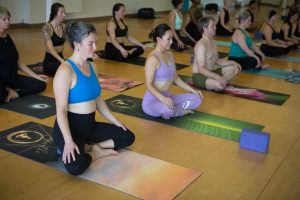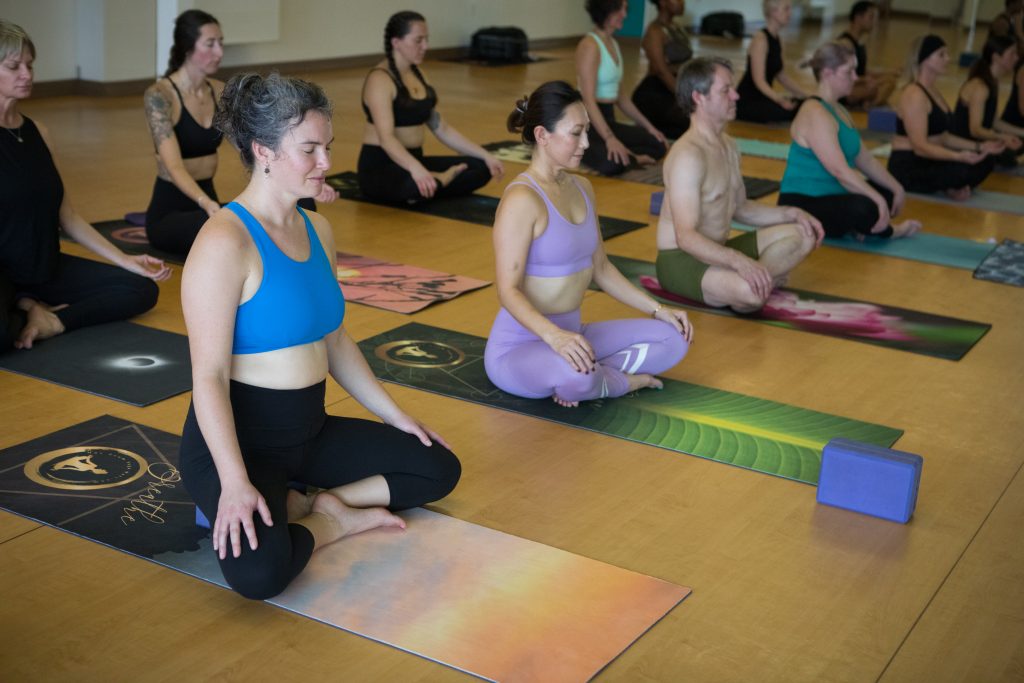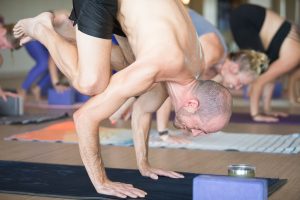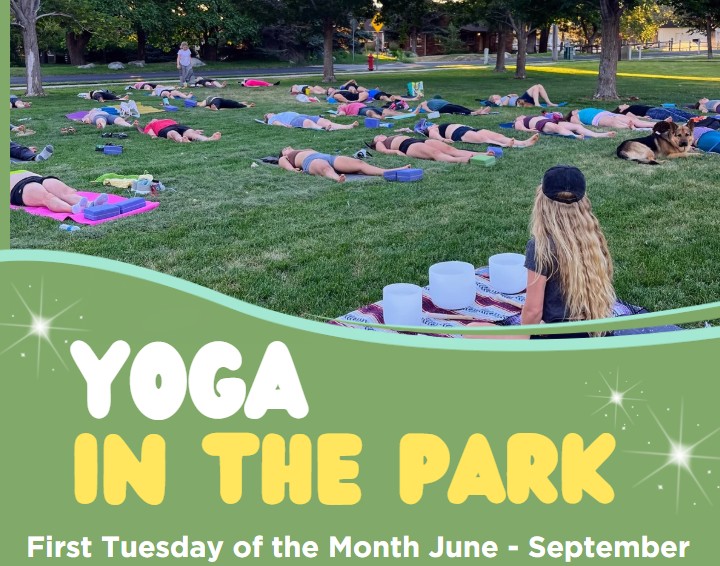Three MYS pros weigh in on why they prefer their asanas hot.
By Melissa Fields
I remember my first hot yoga class like it was yesterday. The rush of heat that greeted me as I opened the door to the yoga room felt like opening an oven. But as I rolled out my mat and relaxed into savasana or corpse pose to wait for the class to begin, it occurred to me that the room felt less like an oven and more like soaking in a hot bath. Within just a few minutes, my sinuses opened and my muscles softened. As the instructor guided us through the poses, I felt my heart beating faster than it had ever had before in a yoga class, and I quickly became slick with sweat. Though I retreated to savasana more than once during that first class, at its end I felt completely spent and deliciously rinsed from the inside out. Waves of euphoria washed over me as I changed and chatted with other students in the locker room afterward—a feeling that lasted hours after I left the studio. Needless to say, I was hooked.

That was more than 15 years ago, and though my hot yoga attendance has ebbed and flowed since, I always find myself coming back to it, kind of like revisiting an old friend. I’ve often wondered why practicing yoga in a hot room feels so different from doing so in non-heated room. So, I asked a few members of the Mountain Yoga Sandy (MYS) staff about their experience and thoughts on hot yoga. Here’s what they had to say.
“The heat dilates your vascular system,” explained Sarah Emery, MYS teacher and events coordinator, “allowing more nutrients and oxygen to be delivered to your muscles and ligaments. At the same time, I think the heat is relaxing, both physically and mentally, warming up and loosening the muscles and mind faster than non-heated yoga.” How comforting it feels to walk into a hot yoga room, especially in the winter, and the natural detox that occurs from the heavier-than-typical sweating are other benefits of hot yoga Sarah loves. “For me, walking into the hot yoga room is like the warmth, total support and safety of my bed,” she added.
“I think the heat is relaxing, both physically and mentally, warming up and loosening the muscles and mind faster than non-heated yoga.”
For Jayda White, MYS teacher and yoga advisor, the amped-up intensity offered by practicing in a heated room is what drew her to hot yoga. “The intensity really helps me focus, allowing me to go deeper, both into the poses and into my meditation.” Jayda also loves how much better she feels after sweating through a hot yoga class. “It literally melts away any soreness or tension in my muscles and leaves me with this greater sense of well-being,” she said.

“I love how the heat elevates your heart rate in the same way running does, but without the wear and tear on your joints,” says Catherine McKenzie, MYS promotions and marketing manager. Catherine also likes how hot yoga has given her an increased tolerance to extreme outdoor temperatures, both hot and cold; how hydrated her skin feels after a class; and “that feeling that my day has been reset after a hot yoga class and savasana.”
“I love how the heat elevates your heart rate in the same way running does, but without the wear and tear on your joints,”
All three, however, acknowledged that beginning a hot yoga practice can be challenging as your body acclimatizes to performing physical activity in a room heated to around 104 degrees. A few tips for making the transition to a hot yoga practice as smooth as possible—as well as for maximizing an existing practice—include:
-
- Arrive fully hydrated. This may mean sipping more water than you normally do, starting as early as the day before you plan to practice hot yoga. Consider also upping your electrolyte intake after class, which can be as simple as adding a little Himalayan pink salt and lemon juice to a glass of water.
-
- Refrain from eating a large meal before class. Since many people report getting their heart rate up into the training zone during hot yoga, it makes sense to consider it in the same way you would any other strenuous workout. Meaning, eating a heavy meal just before will likely make you feel sluggish and possibly nauseous during class.
-
- Embrace the heat in summer. While many regular students love hot yoga in the winter, beginning or maintaining a hot practice in the summer can help build an overall tolerance to higher temps, equating to better performance in outdoor activities like cycling, running and hiking.
-
- Begin at the beginning. Mountain Yoga Sandy’s five elemental classes range in intensity from restore and stretch to fusion and flow classes, providing a road map for both beginning a practice and keeping it sustainable over the long term.
Other benefits that I’ve experienced over years I’ve practiced hot yoga range from helping shed those last five pounds of post-pregnancy weight to how it fast-tracked my recover from a back strain I sustained while rock climbing. Another gain I’ve realized since I began practicing at Mountain Yoga Sandy almost two years ago, that may or may not be attributable to the heat, was beautifully articulated by Sarah: “Yoga is about having your own experience in your own body, not about trying to conform your experience to someone else’s ideal,” she says. “Mountain Yoga Sandy was created as a place where people from all walks of life come together as a community to find what fits best for each of them individually.”







